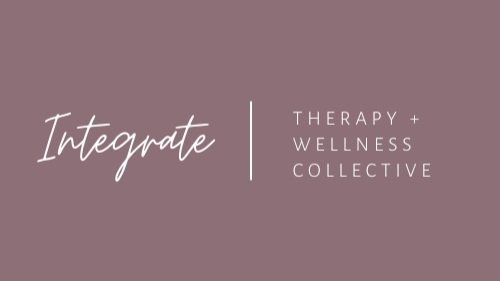The Somatic Side of Healing: How Bottom-Up Approaches Transform Trauma Work
In trauma work, healing often begins from the bottom up—by focusing on the body first. Unlike traditional talk therapies that start with words and thoughts, somatic approaches help clients sense safety and empowerment through physical awareness and mindful regulation. These techniques don’t require advanced preparation; they’re accessible practices anyone can try to reconnect with their bodies and begin healing.
What Are Bottom-Up Approaches?
Bottom-up approaches prioritize the body’s sensations and responses. When trauma is stored in the body, it can manifest as tightness, numbness, or even discomfort during everyday activities. Rather than solely targeting thoughts, these methods acknowledge that healing starts with regulating our physical state. By paying attention to bodily sensations, clients learn to recognize when stress is mounting and find ways to soothe it before overwhelming emotions take over.
Somatic Experiencing: Releasing Stored Trauma
Somatic Experiencing (SE) is a powerful modality developed to address chronic trauma by guiding individuals to observe bodily sensations as they occur. Here’s a real-life example:
An example of this could look like… Imagine a client named Sarah who constantly feels a tight knot in her lower back whenever stressful thoughts arise. In her SE sessions, she learns to gently focus on that knot, noticing its temperature, texture, and changes in intensity. Over time, Sarah becomes better at "tracking" her bodily sensations, realizing that the knot tends to loosen during moments of calm. This insight empowers her to use her body’s natural signals as guides toward healing.
Simple Technique #1: Body Scanning
Find a Quiet Spot: Your reader might begin by sitting comfortably and closing their eyes.
Scan from Head to Toe: Slowly bring attention to each part of the body—from the top of the head down to the feet. Encourage noticing any tension, warmth, or tingling sensations.
Note Without Judgment: Invite your readers to simply observe their sensations without labeling them as “good” or “bad.” This mindful acceptance is a core aspect of SE.
This exercise not only builds awareness but also helps in recognizing early signs of stress.
Mindfulness-Based Stress Reduction (MBSR): Cultivating Present-Moment Awareness
MBSR is a widely recognized method that incorporates mindfulness meditation, gentle yoga, and body awareness practices to reduce stress.
An example of this could look like…Consider James, who experienced overwhelming anxiety after a traumatic event. His therapist recommended a mindfulness routine that involved focusing on his breathing and briefly stepping out of his narrative to observe physical sensations. Over several weeks, James began to notice that focusing on his breath in the present moment provided relief from spiraling thoughts. By anchoring himself in his body during times of distress, he learned to calm his mind.
Simple Technique #2: Mindful Breathing Exercise
Set Aside a Few Minutes: Encourage the client to start with 3–5 minutes a day.
Focus on the Breath: Instruct them to breathe naturally and place one hand on the belly. Ask them to notice the gentle rise and fall of their hand with each breath.
Count Silently: Have them mentally count “one” on the inhale and “two” on the exhale, continuing for several cycles. This counter serves as an anchor to maintain focus on the present moment.
Return When Distracted: Remind them that distractions are natural. Simply acknowledge them and gently return attention to the breath.
This practice can be easily integrated into daily routines, enhancing the client’s ability to use the body as a resource for stability and calm.
Integrating Somatic Techniques in Daily Life
Beyond structured sessions, clients can cultivate body awareness through everyday activities:
Grounding Techniques: Have them plant their feet firmly on the ground and notice the connection between their feet and the earth. This simple act can restore a sense of safety and presence.
Movement Practices: Encourage light stretching, dancing, or a mindful walk. Notice how the body feels during and after movement.
Journaling with a Twist: Invite journaling that explores physical sensations experienced during the day. For example, “Today, I felt a warm sensation in my chest when I smiled.”
By weaving these practices into daily routines, clients create a robust foundation for self-regulation and healing. They learn to interpret bodily signals as empowering guides, rather than as reminders of past trauma.
Final Thoughts
“it’s not the big moves that change everything—it’s the smallest ones in your everyday life that do.”
― Mel Robbins, The 5 Second Rule: Transform Your Life, Work, and Confidence with Everyday Courage
The somatic side of healing reminds us that the body often holds the key to reclaiming personal safety. Both Somatic Experiencing and Mindfulness-Based Stress Reduction emphasize that true transformation occurs when we trust our bodies and listen to the subtle messages they send. Whether through a simple body scan or mindful breathing, these bottom-up approaches offer powerful pathways for anyone seeking to heal trauma in a tangible, embodied way.
Looking Ahead
For those interested in diving deeper, future posts can explore creative extensions of somatic practices. Imagine integrating art therapy with body movement or using guided imagery alongside physical mindfulness exercises. These integrative techniques not only personalize healing journeys but also open doors to innovative ways of understanding trauma and recovery. What might your personal somatic practice look like when you blend these modalities? Perhaps experimenting with slow, mindful dance or creating a "body map" through drawing could reveal new insights into your inner world. Let us know how we can support you here at Integrate Therapy and Wellness Collective.
